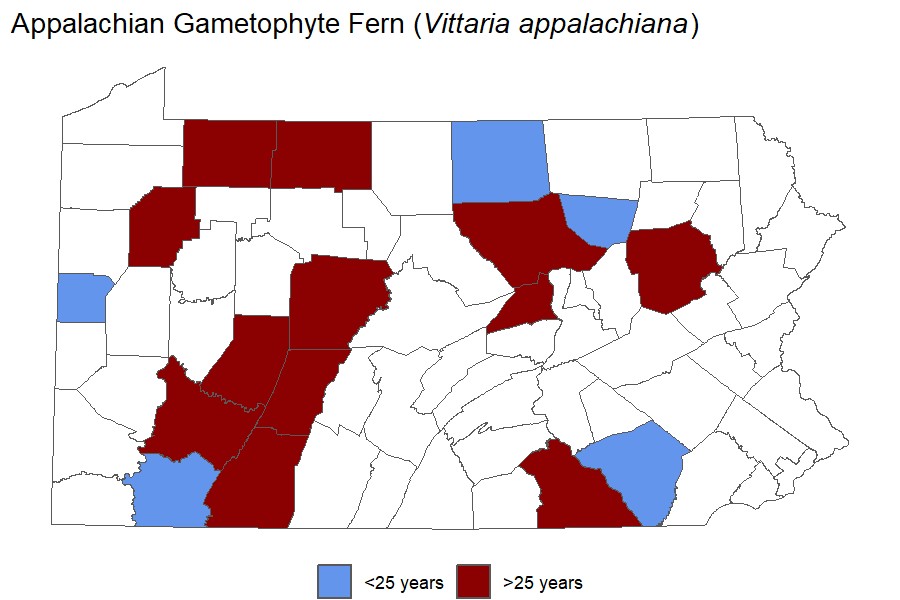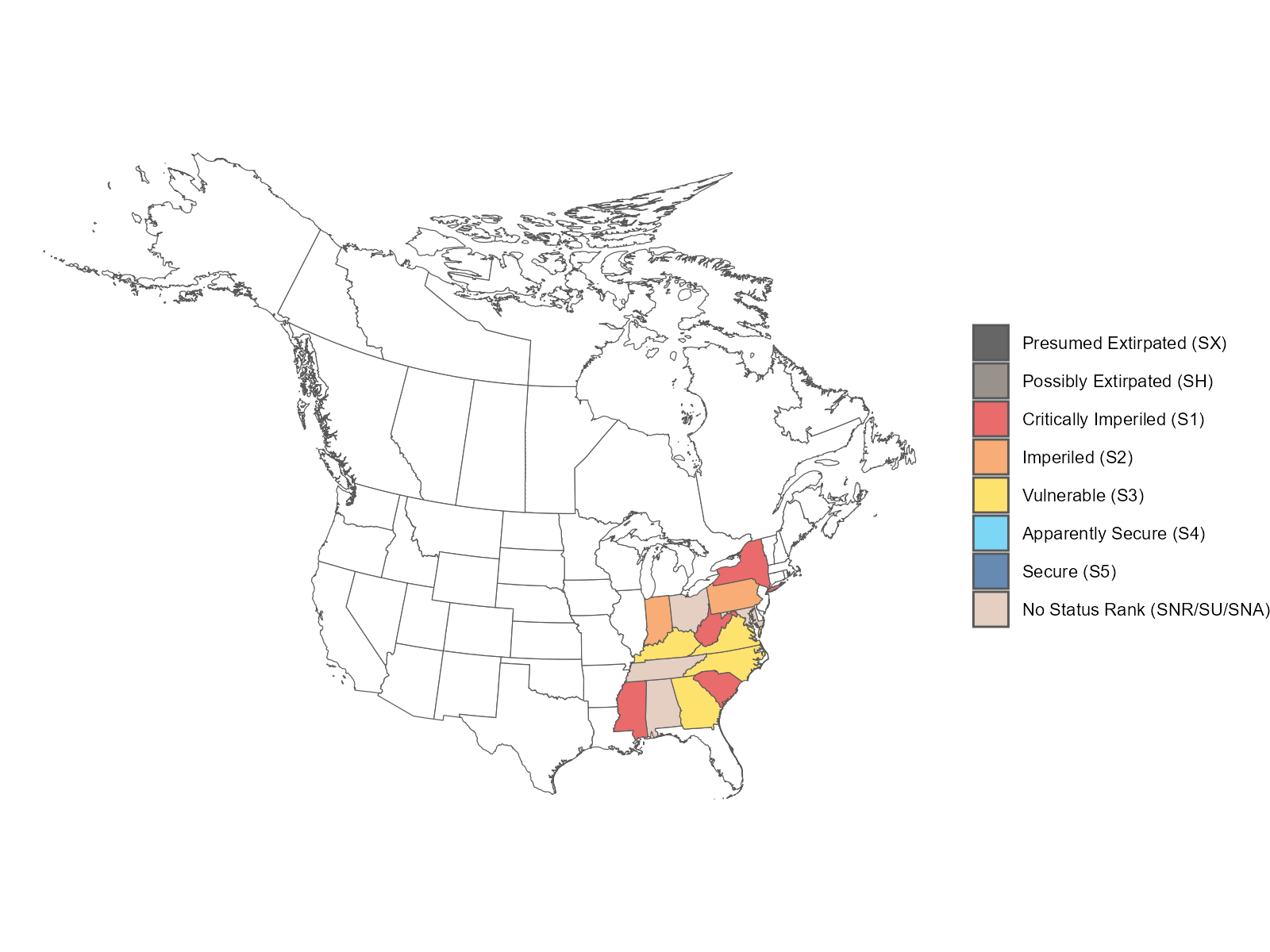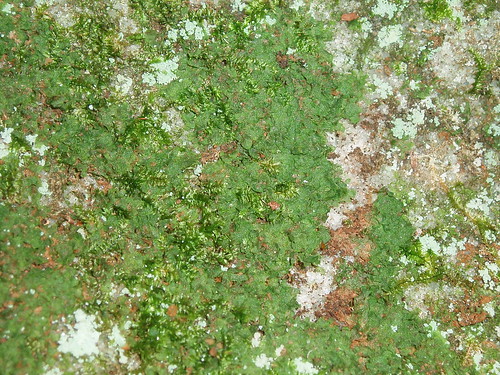 Species Factsheets
Species Factsheets
Vittaria appalachiana
Appalachian Gametophyte Fern
State Status: Pennsylvania Threatened (PT)
PBS Status: Pennsylvania Threatened (PT)
Federal Status:
Global Rank: G4
![]() rank interpretation
rank interpretation
State Rank: S2
Did You Know?
This species is found in deep shaded areas of non-calcareous rock houses and forms small colonies through asexual production.
Description
Appalachian gametophyte fern (Vittaria appalachiana) is a unique type of fern that lacks true leaves, stems, and roots. Individual plants are only about 3mm long, but may grow in mat-like colonies that can be several inches or more. This species greatly resembles a liverwort or moss, and often grows in association with those plants. The fern reproduces itself by producing tiny, bud-like structures (gemmae) that are able to give rise to new individuals.
Rank Justification
Imperiled in the nation or state because of rarity due to very restricted range, very few populations (often 20 or fewer), steep declines, or other factors making it very vulnerable to extirpation from the nation or state.
PABS
The PA Biological Survey (PABS) considers Appalachian gametophyte fern to be a species of special concern, based on the few occurrences that have been recently confirmed and its extremely specialized habitat. It has a PA legal rarity status and a PABS suggested rarity status of Threatened. Because of its minute size, this fern may be more frequent than the current records suggest.
Habitat
It grows on cool, damp, shaded rock outcrops and cliffs, particularly on sandstone, in forested areas.
Survey Dates
Year-round (evergreen)
Distribution
In Pennsylvania, this species has been documented in scattered locations, especially in the mountainous counties.

Threats
Since hemlock (Tsuga canadensis) is often a major constituent of the forest at populations of this fern, the loss of hemlock due to the hemlock woolly adelgid (Adelges tsugae) represents a threat.
Management
The viability of the known populations of Appalachian gametophyte fern and its habitat can be enhanced by maintaining a buffer of forest immediately surrounding the rock outcrop that supports the population.
Conservation Status Map

NatureServe. 2017. NatureServe Explorer: An online encyclopedia of life [web application]. Version 7.1. NatureServe, Arlington, Virginia. Available https://explorer.natureserve.org.
Rhoads and Block The Plants of Pennsylvania pg. 78-9
- NatureServe. 2018. NatureServe Explorer: An online encyclopedia of life [web application]. Version 7.1. NatureServe, Arlington, Virginia. Available at https://www.natureserve.org/explorer
- Pennsylvania Natural Heritage Program. 2018.
- Rhoads, A.F. and W.M. Klein, Jr. 1993. The Vascular Flora of Pennsylvania. American Philosophical Society, Philadelphia, Pennsylvania. Rhoads, A.F. and T.A. Block.
- 2007. The Plants of Pennsylvania: An Illustrated Manual. 2nd edition. University of Pennsylvania Press, Philadelphia, Pennsylvania.







